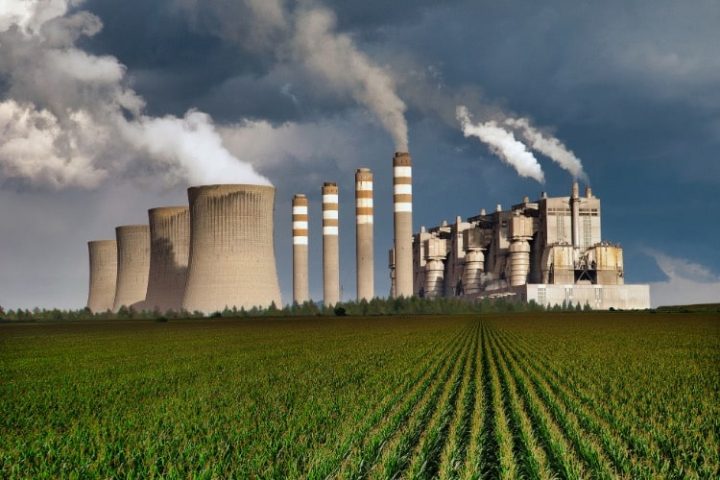
Sounding the alarm on the Environmental Protection Agency’s (EPA) recently proposed “Green House Gas” (GHG) standards for power plants, Republican lawmakers and witnesses at a hearing this week painted a dire future for Americans’ access to affordable and reliable electricity.
“Since day one, President Biden has jeopardized America’s energy security by pushing a quote ‘whole-of-government’ climate agenda that increases energy costs, degrades energy reliability, and harms our economic and national security,” said Bill Johnson (R-Ohio), chairman of the House Energy and Commerce Subcommittee on Environment, Manufacturing, and Critical Minerals, during his opening statement.
Johnson continued, “at the forefront of this regulatory onslaught is the EPA’s recent announcement proposing expensive and unproven greenhouse gas emissions standards on electric generating units, particularly coal and natural gas-fired power generation which alone make up 60% of America’s electric generation capacity.”
“Under the Biden administration’s ‘Clean Power Plan 2.0,’ existing coal-fired generation must either limit its capacity-factor to 20%, co-fire with 40% natural gas, or capture 90% of its carbon dioxide with CCS,” he added.
The hearing, titled “Clean Power Plan 2.0: EPA’s Latest Attack on America’s Electric Reliability,” brought testimony from power providers and leaders to supporters of the Biden administration’s green energy plan that the EPA has been tasked to implement.
Patrick O’Loughlin, CEO of Buckeye Power, Inc. and Ohio Rural Electric Cooperatives, testified, “The proposed GHG rules for power plants require unproven emission control ideas on power plant operators in unrealistic timeframes.” O’Loughlin bluntly affirmed the affects of the EPA’s rules, stating, “If enacted, it will jeopardize nearly every coal-fired power plant by 2039 and most by 2030. In our case, Buckeye supplies more than 80% of our annual energy requirements from coal-fired power plants. Buckeye Power will be required to shut down all of our coal-fired units by 2030 with no hope of nearly replacing this energy within that timeframe.”
The power grid stability across the nation is another major concern. A recent Summer Reliability Assessment report from the North American Electric Reliability Corporation (NECR) labeled the risk of insufficient operating reserves in much of America as “elevated.” They blamed part of the potential reliability issues on the EPA’s Good Neighbor Plan that was finalized in March. NERC stated that the EPA plan would restrict power plant emissions and will “limit the operation of coal-fired generators in 23 states, including Nevada, Utah, and several states in the Gulf Coast, mid-Atlantic, and Midwest.”
Adding to current electric grid stability and the need to upgrade America’s electric grid infrastructure, the American Prospect reported:
Ensuring the reliability of the electric grid should be at the top of the country’s infrastructure to-do list. It barely is. The American Society of Civil Engineers rated the country’s energy networks a C-minus in 2021, a sorry state of affairs in a country that hedges on moving toward adoption of clean energy sources and away from fossil fuels to stave off the most severe effects of the climate crisis. In the short term, grid operators must confront major threats like severe weather and power outages during periods of peak demand. Over the longer term, these systems require upgrades, replacements, and a historic expansion to bring renewable energy sources to the nation.
“We are losing time because every piece of fossil fuel infrastructure we need to take offline needs to be replaced by something,” says Ben Pendergrass, the Citizens’ Climate Lobby vice president of government affairs. “Right now, we don’t have all the capacity we need to get that renewable power to American households.”
O’Loughlin also highlighted the need to address infrastructure, pointing out in his testimony that “much of what will be needed for power plants to comply with EPA’s proposed rules depends entirely upon the infrastructure that is outside the fenceline of power plants and outside of their control. According to a Princeton study, approximately 65,000 miles of CO2 pipelines will be needed to transport captured CO2 to storage sites to achieve economy-wide net zero emissions in the United States by 2050. According to the Pipeline and Hazardous Materials Safety Administration, only 5,300 miles of CO2 pipelines currently exist and those pipeline networks are concentrated in only a few states.”
Not everybody at the hearing was concerned over the new rules. One supporter of the EPA’s proposed standards, Jay Duffy, litigation director at Clean Air Task Force (CATF), stated, “CATF’s mission is to push the technology and policy changes needed to achieve a zero-emissions, high-energy planet at an affordable cost.” Duffy argued, “the impacts of the proposal are modest and manageable. Congress directed EPA to set emission standards for carbon pollution from power plants based on the best system of emission reduction. EPA performed that duty here. Several overlapping layers of security are in place to ensure that we do not need to choose between public health and reliable electricity.”
However, the testimony of Todd Snitchler, president & CEO of Electric Power Supply Association, truly exposed the elephant in the room when he said, “Some who dismiss concerns about the loss of both natural gas and coal generation cite advancements in both long duration battery storage and carbon capture and sequestration (CCS) technologies to calm fears about reliability. It is important to note that — as of June 2023 — not a single commercial power plant in the United States uses CCS technology and there are no megawatts of long duration, multi-day battery storage interconnected to the bulk power system.”
If anything, Tuesday’s hearing showed that the Biden administration’s green energy agenda will dramatically change the lives of all Americans when and if the EPA rules are implemented.
However, we can only hope that common sense prevails. As Johnson noted, “In a landmark decision, in West Virginia v. EPA, the Supreme Court found that such sweeping regulations by the federal government failed the ‘major questions’ doctrine, which states that an action of major national importance must have explicit direction from Congress. EPA had no such authority then and it has no such authority now to transform our electric sector.”




